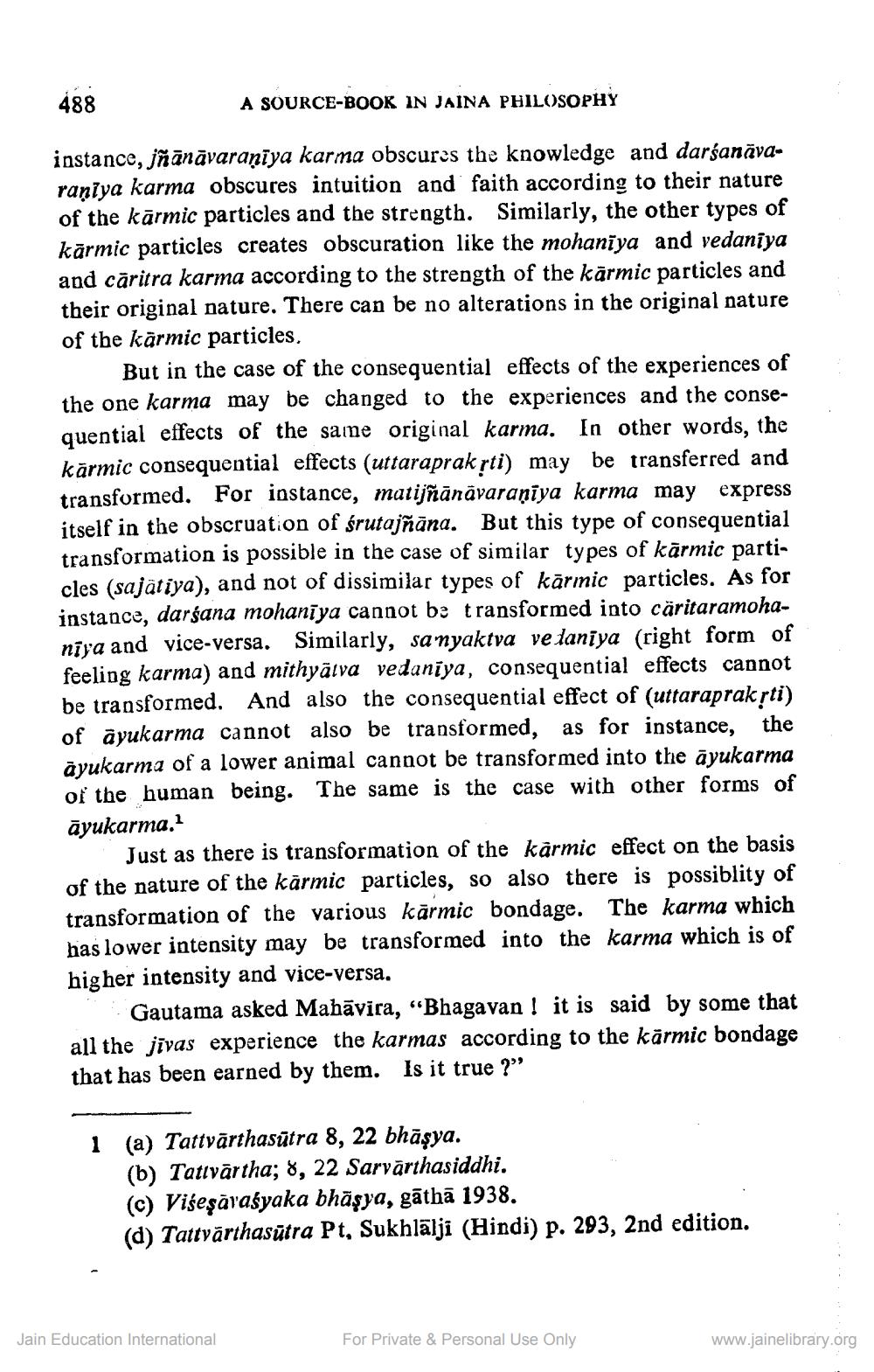________________
488
A SOURCE-BOOK IN JAINA PHILOSOPHY
instance, jñānāvaraṇīya karma obscures the knowledge and darśanīva
karma obscures intuition and faith according to their nature of the kārmic particles and the strength. Similarly, the other types of kārmic particles creates obscuration like the mohaniya and vedaniya and cāritra karma according to the strength of the kārmic particles and their original nature. There can be no alterations in the original nature of the kārmic particles,
But in the case of the consequential effects of the experiences of the one karma may be changed to the experiences and the consequential effects of the same original karma. In other words, the kārmic consequential effects (uttaraprak sti) may be transferred and transformed. For instance, matijñānāvaraniya karma may express itself in the obscruation of śrutajñāna. But this type of consequential transformation is possible in the case of similar types of kārmic particles (sajātiya), and not of dissimilar types of kārmic particles. As for instance, darśana mohanīya cannot be transformed into cäritaramohaniya and vice-versa. Similarly, sanyaktva ve laniya (right form of feeling karma) and mithyālva vedaniya, consequential effects cannot be transformed. And also the consequential effect of (uttaraprakrti) of ayukarma cannot also be transformed, as for instance, the àyukarma of a lower animal cannot be transformed into the āyukarma of the human being. The same is the case with other forms of āyukarma.
Just as there is transformation of the karmic effect on the basis of the nature of the kārmic particles, so also there is possiblity of transformation of the various kārmic bondage. The karma which has lower intensity may be transformed into the karma which is of higher intensity and vice-versa.
Gautama asked Mahāvira, "Bhagavan ! it is said by some that all the jīvas experience the karmas according to the kārmic bondage that has been earned by them. Is it true ?”
1 (a) Tattvārthasūtra 8, 22 bhāşya.
(b) Tativārtha; 8, 22 Sarvārthasiddhi. (c) Višeşāraśyaka bhäşya, gāthā 1938. (d) Tattvärthasūtra Pt, Sukhlālji (Hindi) p. 293, 2nd edition.
Jain Education International
For Private & Personal Use Only
www.jainelibrary.org




